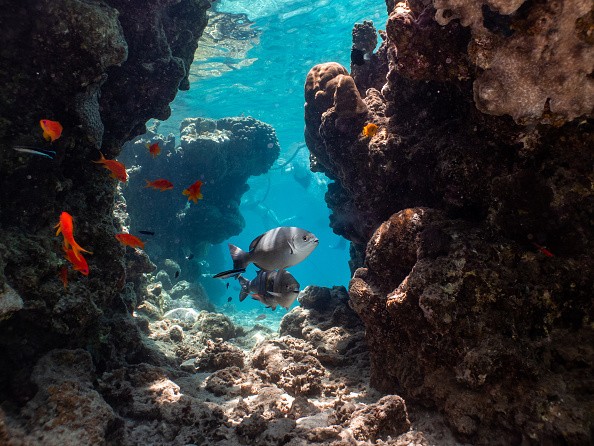Caused by climate change, marine heat waves have affected aquatic life. The research observes increased surface temperature, species migration, and unusual patterns in the ocean.
Whatever happens there, it means an urgent concern exacerbated by environmental issues.
Scientists use the term blob as a phenomenon showing marine heat waves. According to National Geographic, oceanic heat waves are high and anomalously warm temperatures that could last for at least five days, weeks, or months.
Moreover, oceanographer Hillary Scannell said to National Geographic that marine heat waves pose a big concern with increasing frequency and intensity.
Marine heat

In late 2013, National Geographic said water began warming in the Gulf of Alaska. Experts noticed that the sea temperatures increased by an average of 5 degrees Fahrenheit in just a few months, and in other places by as much as 7 Fahrenheit.
By mid-2014, the report added that the increased surface temperature affects the ocean area over 500 miles across and 300 feet deep.
Additionally, it also damaged the sea animals in the area. Reports show that the number of plankton and krill declined, starving sea lions and many seabirds died. It is one of the many effects of climate affecting the food chain.
Also Read: The World's Largest Container Line Reroutes Ships to Avoid Harming Endangered Blue Whales
As a result, National Geographic said that a group of 15 ocean experts met in Perth prompted by a warming event from 2010 to 2011. It says that the waters of western Australia reached 11 Fahrenheit, causing concerns for scientists resulting in the death of huge swathes and animals.
National Geographic explained that the increasing study stresses the growing concerns of the marine heat wave.
According to Eric Oliver of Dalhousie University in Canada, the term marine heat wave was first used in 2010 and 2011. He added that he could no longer keep track of many papers about the marine heat wave
Reports show countries affected by marine heat waves:
- New Zealand in 2021 and 2022 was hit by the country's highest ocean temperatures affecting millions of sponges.
- IN 2016, Chile experienced a marine heat wave that caused to trigger algal blooms devastating fish farms.
The Woods Hole Oceanographic Institution said oceans have warmed by about 1.7 Fahrenheit since 1901. It explained that the ocean absorbs 90 percent of the excess heat added to the atmosphere and is exacerbated by burning fossil fuels and other environmental issues.
Warmed oceans can affect the marine environment. Also, the increasing global temperature can melt the glacier underneath, causing the sea level to rise.
The Blob
The NOAA Fisheries in the Rise and Fall of the blob explained that their team noticed that:
- Fish that should spawn in mid-summer started appearing in Winter off Oregon;
- The migration of salmon has changed;
- Subtropical species showed up thousands of miles from their typical range.
- Scientists concluded that warming waters caused a new migration for turtles from the central pacific.
The study noted that the blob warmed waters as worst or more potent than El Nino.
Related Article: Six Climate Tipping Points that Could Trigger Climate Emergency
For more similar stories, don't forget to follow Nature World News.
© 2025 NatureWorldNews.com All rights reserved. Do not reproduce without permission.





